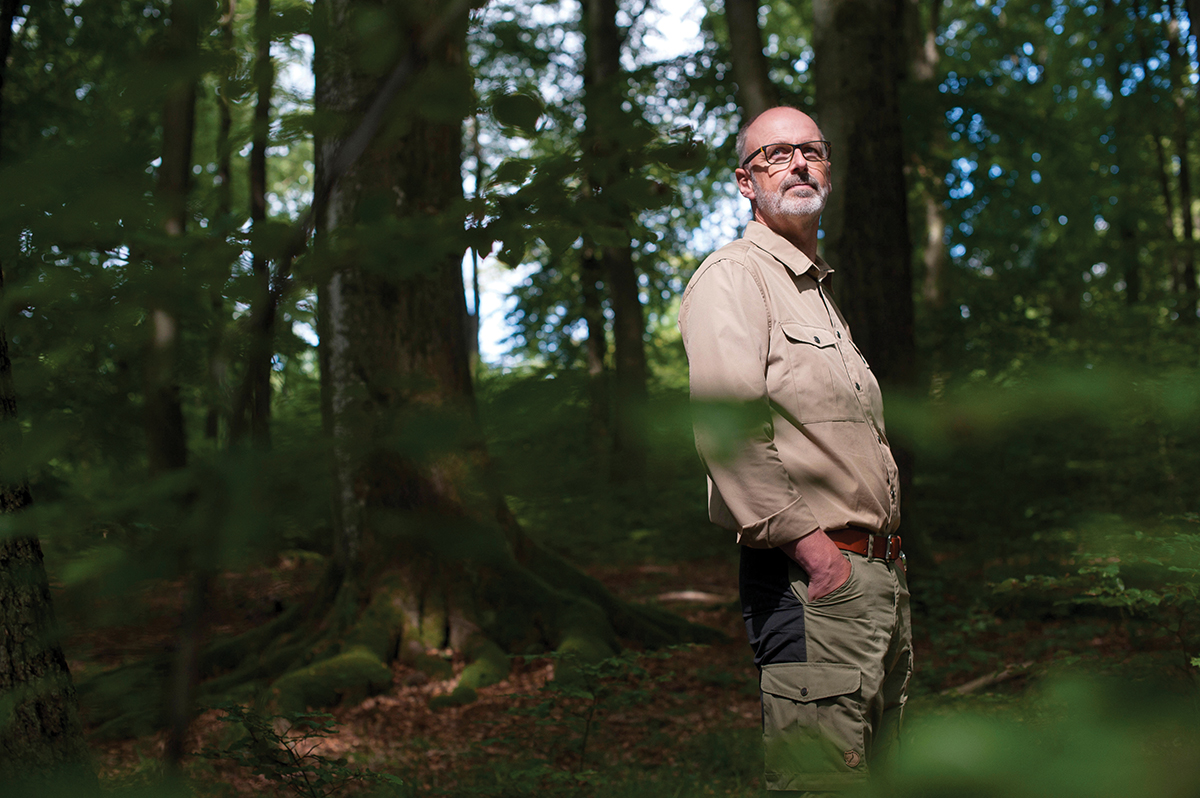Q You write with such passion about trees and forests. Where does this passion come from?
A I really don’t know. I have two sisters and a brother, and I’m the only one in our family who is so in love with nature. As a child, I always wanted to protect nature. I had spiders in jars and big aquariums on my desk. I spent every hour I could outdoors.
You may unsubscribe from any of our newsletters at any time.
Q Why did you write The Hidden Life of Trees?
A I had been leading guided forest tours [in Huemmel, Germany] for 25 years, and people always asked to read more. My wife said, “Peter, write up 10 pages so you can at least give people a handout,” and I always refused. I like to be outdoors. Finally, I gave up my resistance and wrote some pages and sent them to publishers.
Q In your book, you write that trees possess a form of intelligence. Please explain.
A Yes, not intelligence as we are used to describing it, but at the tips of their roots are brain-like structures where electrical processes are going on. With their roots, trees are able to learn and make decisions. For example, when a tree has suffered a heavy drought, the tree will remember this for the rest of its life and will change its water usage the next spring.
A mother tree is able to tell with its roots which seedlings are its own. It can pump a sugar solution to them for nutrition.
Q You also cite research that says trees can “talk” with one another. How is this so?
A Scientists can prove very easily that trees exchange information. For example, when an insect attacks a tree, you can measure electrical signals going through the tree, and the tree will produce poisonous substances to get rid of the insect. In the meantime, it warns its surrounding companions by a chemical call, a scent, and the other trees know instantly what sort of attack is coming and can prepare themselves.
We know just a few words of tree speech, [by observing how trees respond] when they are under attack. It’s like learning English by hurting people and then listening to what they are telling you. So it’s not a good way to learn tree speech, but it’s the only one we have so far.
Q You’ve described the connections among trees as “friendships.”
A In primeval forests, trees of the same species live in family bands and have a social structure. In some cases, two trees will combine their root systems so strongly that when you cut one of the trees, the other one will die. It’s like an old couple, where the remaining one says, “I don’t want to live.”
Q Everyone knows what the World Wide Web is. You describe a “wood wide web” that roams the forest floor, transporting nutrients and information between the roots of trees. What is this natural Internet?
A It’s a fungi network. Nature magazine called it the “wood wide web” in 1995. It is very, very dense — there is more than a mile of fungi filaments in one teaspoon of soil.
Unlike plants, fungi are not able to feed themselves [through photosynthesis, which produces glucose, or sugar]. They offer the means to transport sugar or news between trees, and they get payment from the trees in sugar. Mushrooms are the fruits of this fungi network.
Q Do trees feel pain when they are pruned or cut down?
A We don’t know how trees experience pain, but the mechanism is the same [as in humans]. When you hurt a tree, electrical signals run through the tree’s tissue. New research by the University of Leipzig shows that when a human cuts a branch, the tree will bring in wound-healing substances, but when a deer bites on a branch, the tree will first bring in poisonous substances to [repel] the deer, and afterwards bring in substances to heal the wound. So a tree is able to sense the difference in attacker.
Q Some critics of your book accuse you of anthropomorphism. Do you have any hesitation about attributing human-like qualities to trees?
A No, because to talk about biochemical processes for hours — the whole audience would be bored. When I say mother trees suckle their children, no one really thinks that the mother tree will latch its seedling to a non-existent breast. But you say “suckling,” and everyone knows instantly what’s going on — that there’s a special relationship. When you pull all the emotions out of facts, no one is interested. It’s time to translate the research for lay people.
Q Do trees and other plants have rights?
A In Switzerland, you find that plants have rights [under a gene technology act that recognizes “the dignity of living beings”]. In one or two decades, I think we will see this in other countries. Forest plantations can be likened to industrial animal farming, which is also criticized. It’s not [consistent] to recognize the rights of animals but then say we can do whatever we want with plants.
Q If trees possess intelligence, should we feel differently about using wood? Are there ethical issues involved?
A I think it’s okay to use wood for heating, furniture and so on, because we also have our rights. It’s a question of balance. We need some protected areas of forest, and other areas we can use gently.
We shouldn’t use large machinery to harvest trees because it compresses the soil. In my forest, we use horses for harvesting, and we have better benefits and income than the forests that are using the big machines.
Q How can spending time in a forest improve human health?
A Research in South Korea and Japan shows that your blood pressure will go down when you’re in a healthy coniferous forest. There is also research that says if you can look out the window at a tree when you’re in the hospital, you will become healthy again more quickly than if the tree wasn’t there. It makes sense. For example, fire and humans go together, otherwise we wouldn’t have developed as we did. Now for fire, you need to have wood, forests, so this strong relationship with our ancestors is there in our unconscious.
Q Should we have more trees in cities?
A First we have to recognize that trees in the city are for us. They’re not there for the trees’ benefit. When you have a city park with different tree species, it’s like you have one giraffe and one lion and you say, “Wow, a savannah.” You think it’s a forest, but it’s really a tree zoo. The trees grow up like orphans, street kids, because they have no family connections.
Q What new developments in tree research most excite you?
A My biggest wish is that we’ll one day develop a chemical detector that would link tree language with human language. When you walk through a forest, it could tell you what the trees are talking about, whether they feel well or if they notice a mammal approaching on two legs — hopefully without a chainsaw!
This interview has been condensed and edited.
This story originally appeared in the June 2017 issue of The Observer with the title, “Interview with Peter Wohlleben.”













